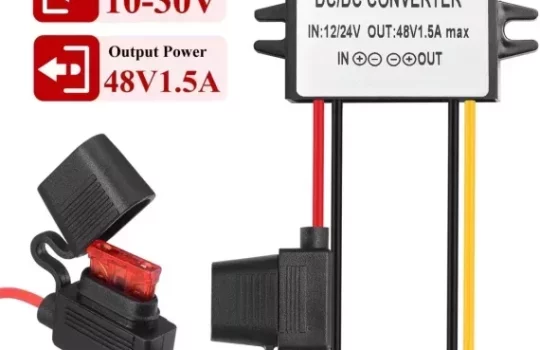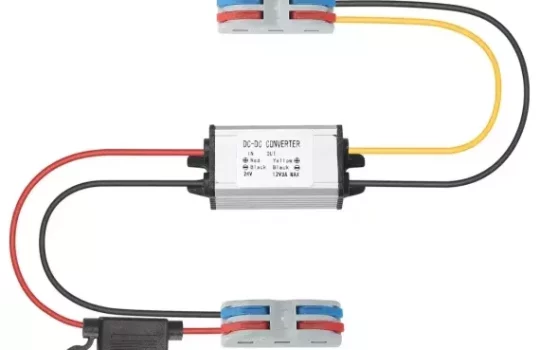Transformers are essential components in electrical power systems, designed to either step up or step down voltage levels in alternating current (AC) circuits. A step-up transformer increases voltage from the primary to the secondary coil, whereas a step-down transformer decreases it. While their primary applications may differ, an interesting question arises: Can a step-up transformer be reversed?
The idea of reversing a transformer is not only technically feasible but can also be used creatively for different purposes in electrical systems. However, reversing a step-up transformer comes with its own set of considerations and challenges. This article will explore the concept of reversing a step-up transformer, the underlying principles, practical applications, and potential issues that arise when using a step-up transformer in reverse.

1. Understanding the Basic Operation of a Transformer
Before diving into the implications of reversing a step-up transformer, it’s essential to understand how a transformer works. A transformer operates on the principle of electromagnetic induction, where electrical energy is transferred between two coils, typically made of copper wire. These coils are positioned around a shared magnetic core.
- Primary Coil: This is the coil where the input voltage is applied. The current flowing through the primary coil creates a magnetic field around the transformer.
- Secondary Coil: This coil is placed near the primary coil and is responsible for delivering the output voltage. The changing magnetic field from the primary coil induces a current in the secondary coil, which generates the output voltage.
In a step-up transformer, the secondary coil has more turns of wire than the primary coil. This configuration increases the voltage while decreasing the current. Conversely, a step-down transformer has fewer turns in the secondary coil than in the primary, which decreases the voltage and increases the current.
2. Reversing the Transformer: The Basics
Reversing a transformer essentially means swapping the roles of the primary and secondary coils. When you reverse a step-up transformer, you essentially turn the secondary coil into the primary and the primary coil into the secondary. The voltage that was previously being stepped up is now being stepped down, and the current that was increased is now reduced.
How Reversing Works:
When a step-up transformer is reversed, the primary coil (now used as the secondary) will produce a voltage that is lower than the input voltage. Similarly, the coil that was initially the secondary (now used as the primary) will have a voltage that is higher than the secondary voltage, but it will be proportionately reduced based on the turns ratio.

The key to reversing a step-up transformer lies in understanding the transformer’s turns ratio, which determines the relationship between the primary and secondary voltages.
- Turns Ratio: The turns ratio of a transformer is defined as the number of turns in the primary coil compared to the number of turns in the secondary coil. This ratio dictates whether the transformer is stepping up or stepping down the voltage.
For example, if a step-up transformer has a turns ratio of 1:10, meaning for every turn in the primary coil, there are 10 turns in the secondary, reversing this would make it a step-down transformer with a ratio of 10:1.
3. Effects of Reversing a Step-Up Transformer
Reversing a step-up transformer doesn’t just change the voltage; it can also affect other parameters such as efficiency, load capacity, and the quality of the output power.
Voltage and Current Relationship:
When reversing a step-up transformer:
- The voltage output from the secondary (now acting as the primary) will decrease in proportion to the turns ratio.
- The current in the secondary (now acting as the primary) will increase according to the inverse of the turns ratio. This is because of the principle of conservation of energy and the relationship between power, voltage, and current in electrical circuits.
For example, if a step-up transformer is designed to step up the voltage from 120V to 240V, reversing it would result in a step-down transformation, where the voltage would be stepped down from 240V to 120V. However, the current on the new secondary side (previously the primary side) will be higher, potentially impacting the capacity of the wire and the overall efficiency.

Power and Efficiency:
Transformers operate with a certain degree of efficiency, and the reversed configuration will often affect this. When a step-up transformer is reversed, it might not operate as efficiently as a designed step-down transformer because of factors such as the core material and winding resistance, which are optimized for specific voltage levels.
Additionally, the capacity of the transformer to handle the increased current in the new primary side may be limited. The transformer may overheat or experience more losses if the reverse application demands higher currents than the original design specifications allow.
Load Capacity:
Step-up transformers are often designed to handle specific current levels. When reversed, the secondary side might now carry more current than it was originally rated for, potentially resulting in overheating or damage to the transformer. Overloading the transformer could lead to reduced lifespan and efficiency.
4. Practical Applications of Reversing a Step-Up Transformer
While reversing a step-up transformer is possible, it’s not always practical or efficient in many situations. However, there are specific scenarios where this concept can be useful:
Specialized Power Systems:
In certain niche applications, reversing a step-up transformer might be used to create specific voltage levels where a step-down transformer is not readily available. For example, when designing a power system for an experimental setup or unique equipment, a reversed step-up transformer may provide the necessary voltage.
Multiple Voltage Outputs:
Some electrical systems may require multiple voltage levels. In such cases, a transformer could be designed to serve both functions. By using the same transformer in a reversed configuration, it could serve as both a step-up and a step-down transformer, depending on the needs of the system.
Voltage Regulation in Some Industries:
In some industries, especially those dealing with sensitive equipment or complex electrical grids, the ability to reverse a step-up transformer can offer flexibility. For example, reverse operation can sometimes be employed to test and maintain systems by adjusting voltage levels as required.

5. Limitations and Considerations
While the process of reversing a step-up transformer is technically feasible, there are several key limitations and risks:
- Efficiency Losses: As mentioned earlier, transformers are optimized for their intended use. Reversing a step-up transformer might introduce inefficiencies, such as increased heat generation and power losses.
- Overloading: Reversing a transformer could cause the new primary coil to handle higher currents than it was designed for, leading to potential overheating and damage.
- Regulatory Compliance: Depending on the application, using a transformer in a reverse configuration might violate regulatory standards or specifications. Transformers are often designed with strict guidelines to meet safety, performance, and efficiency standards.
Reversing a step-up transformer is entirely possible and can serve specific needs in electrical systems. By swapping the roles of the primary and secondary coils, a step-up transformer can be used to step down voltage, but this comes with several challenges. Efficiency losses, increased current, and potential overloading of the transformer must be carefully considered before implementing a reversed step-up transformer.
In practical terms, reversing a transformer is generally more of a theoretical concept used for specific applications or for testing purposes rather than a widely recommended practice. For more efficient and reliable voltage conversion, it is typically better to use transformers that are designed for their specific purpose—step-up for increasing voltage and step-down for reducing it.
In conclusion, while a step-up transformer can be reversed, doing so should be carefully evaluated in terms of the operational requirements and limitations of the system. For most typical applications, it is more advisable to use a transformer designed for the appropriate voltage conversion to ensure optimal performance and safety.






